What Would You Make of This Tree?
What Would You Make of This Tree?
Below is one little Si-Hong, grafted in 2023, in a pot of 190 mm diameter and height. Is your first impression somewhat unfavourable?!
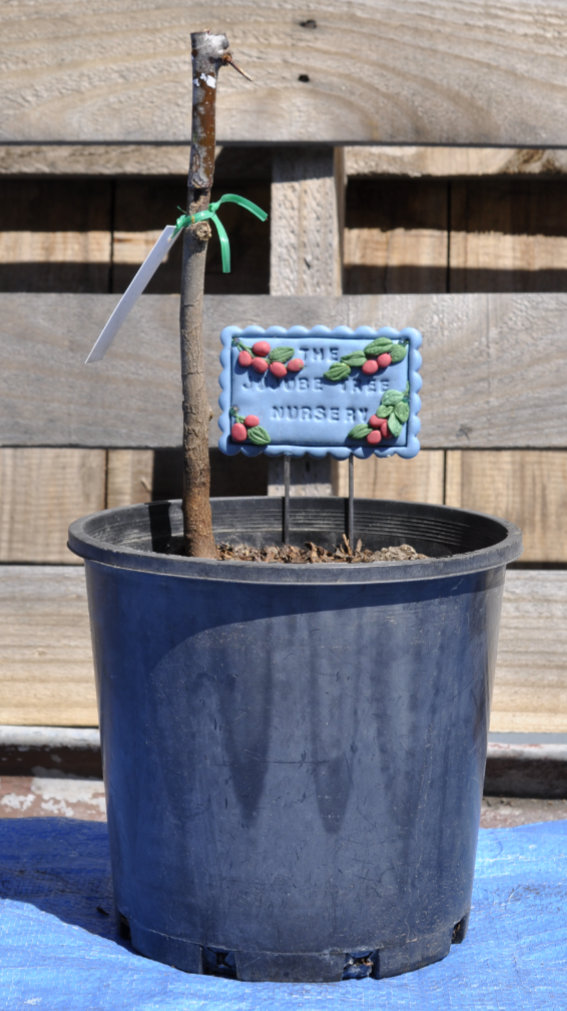
© Optimate Group Pty Ltd
I find this little fellow so charming and full of heart, that I can’t help but make it the subject of today’s topic: mother fruiting branches.
But first, how do we even know this tree is even alive?
Is This Tree Alive?
Yes, big time! Please refer back to the photos in here and here to compare with the ones below.
The Mahogany Flush
Here we see that beautiful mahogany flush along the length of the trunk:
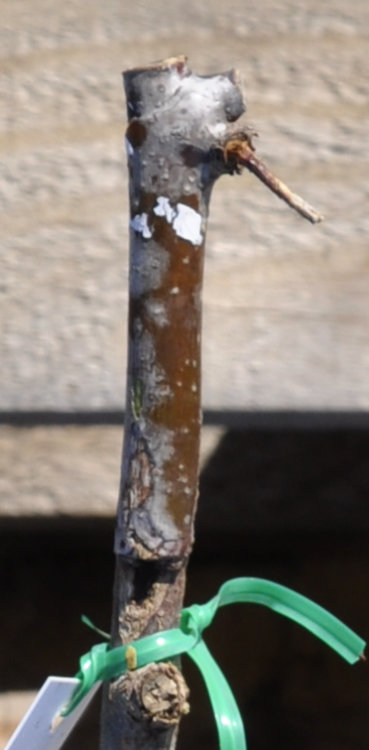
© Optimate Group Pty Ltd
Vivid Green Sap
With a vivid green sap:
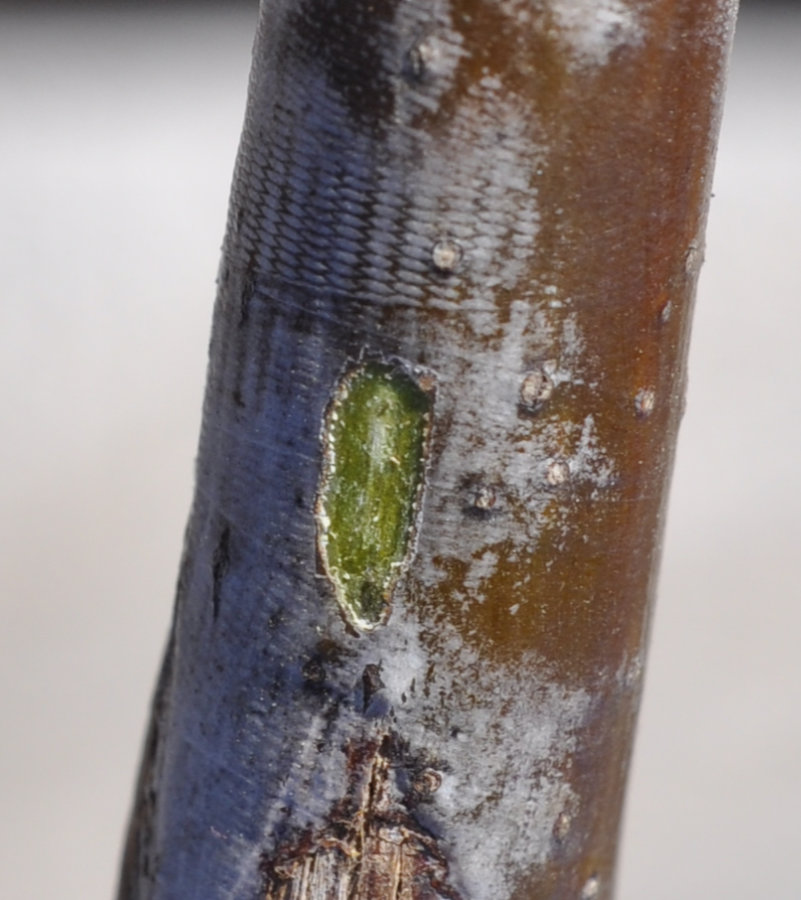
© Optimate Group Pty Ltd
‘The Look’
‘The look’ is the appearance of a brown fuzziness which is the new leaf tips emerging. This is so small and indistinct as to be invisible to the uninitiated eye, but once you get your eye in, you too will see this unmistakable look, unassisted and even from a short distance.
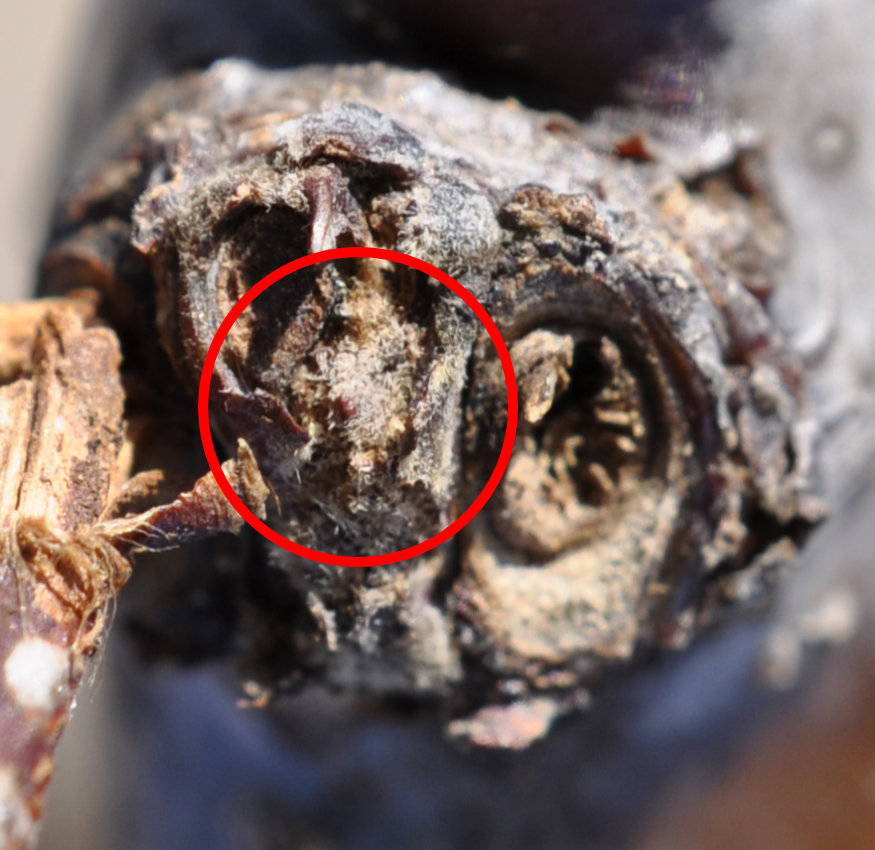
© Optimate Group Pty Ltd

© Optimate Group Pty Ltd
Introducing the Fruiting Mother Branch
Jujube trees have four different branch types. Please refer back to this post where two of these were covered very briefly — the extension branches which add height and width to a tree; and the fruiting branchlets which are the only branch type which flowers and fruits. (There will be far more detail to come on all four!)
Apart from one exception I’ll cover in a future post, fruiting branchlets primarily grow from fruiting mother branches.
And what does a fruiting mother branch look like?
This:

© Optimate Group Pty Ltd

© Optimate Group Pty Ltd
Confused as to what you are looking at? Don’t worry, it isn’t you! These trees really are this weird — that protruding lump is the fruiting mother branch in its entirety, and the reason you are so confused is because it doesn’t look at all like a branch. Oh, and that hanging dead twig is last year’s deciduous fruiting branchlet which just doesn’t want to let go of mother.
That protruding lump is actually a highly compressed bundle of shoots, and those shoots contain both main buds and secondary buds. (These two bud types are yet another peculiarity of jujube trees, and yes, more detail on these to come too!)
Each year the fruiting mother branch will grow just a tiny bit more, and on much older trees these branches resemble pine cones:

© Optimate Group Pty Ltd
Back to the little Si-Hong:

© Optimate Group Pty Ltd
Why did I choose this tiny little stick to talk about fruiting mother branches?
Because all it has is a single fruiting mother branch, which will entirely dictate how it will grow (or not) for the next year, and possibly for the next two years.
Fruiting mother branches, as mentioned above, are a collection of highly compressed shoots with main and secondary buds on them.
The secondary buds are always active, and these are the ones which produce the deciduous fruiting branchlets every year, replacing the previous year’s ones which fell off the previous winter.
The main buds however, are typically dormant and can remain so for years. But when a main bud breaks dormancy, watch out! For a main bud breaking dormancy in a mother fruiting branch will produce a new extension branch:

© Optimate Group Pty Ltd
And these extension branches can grow at such a rate as to double or in some cases triple the height of a tree in a single season.
Can you see that bright green thick shoot off to the right labelled ‘permanent primary branch’? A ‘primary branch’ is the same thing as an ‘extension branch’. Primary/extension branches are the only branch type to define the height, width, and overall structural shape of a jujube tree. The first year’s wood is always that bright green colour. (It will turn a rich mahogany red by end of season, then become more grey and furrowed with subsequent years.)
Note too the strange angle that branch has shot from. These main buds can be anywhere, thus the angle and direction of the extension branch will be determined by which dormant main bud breaks first. Here, the extension branch just happened to have shot from the top of the fruiting mother branch:
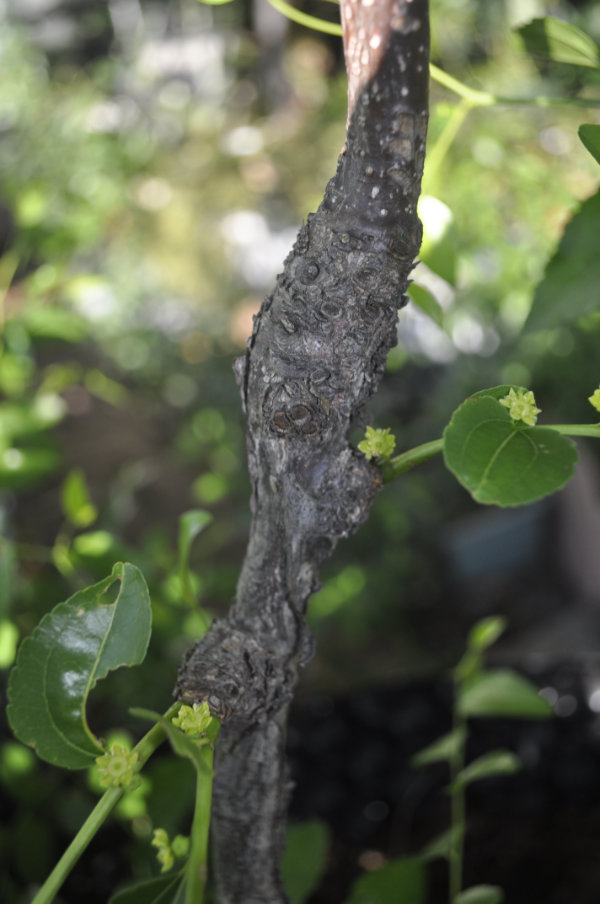
© Optimate Group Pty Ltd
Here, a bud broke dormancy at just the right place to produce this elegant branched trunk:

© Optimate Group Pty Ltd
The reason this lone mother fruiting branch on the little Si-Hong is so significant, is because that mother fruiting branch will definitely produce a number of fruiting branchlets this year from the active secondary buds within. And these fruiting branchlets will all go on to flower and fruit this season. By any definition that is a productive fruit tree.
And yet that tree will not grow one centimetre taller this year if not one main bud in that mother fruiting branch breaks dormancy to produce an extension branch.
And should a main bud also not break dormancy next year, that tree will again remain the same short height it is now for another year! There is no other mother fruiting branch on that tree bar the one on the grafted rootstock. (Any shoots that rootstock branch puts out must be removed.) Thus the tree’s growth, or lack thereof, this year will be down to whether any main buds in that single mother fruiting branch decide to break dormancy.
But if that bud breaks this year, that little Si-Hong will look a completely different tree. This tiny thing has the potential to be one that triples in height if so.
It is understandable that people with trees like this may start blaming either themselves or the tree after a year of no growth, or possibly two in some cases. And imagine how freaked out they’d be come winter, when those deciduous fruiting branchlets all drop off! A whole year of no growth, followed by the only “branches” they saw all year dropping off en masse!
Their tree — again the exact same stick in the ground it began as — will be regarded by them as having given up and entered tree heaven. But all it is, is the particularly unusual growth habit this species exhibits, which is like no other fruit tree they may have decades of experience with. If left alone that stick will burst with new growth all over again the following spring. And maybe, just maybe, with an extension branch to reward them for their patience.
As reader James said (hello James!): “These are strange trees to prune. They shoot from anywhere and the shoot can grow extremely fast.”
Amen to that James!
This unusual growth habit is also another reason I strongly recommend anyone who asks, to not prune their trees in the first year or two, until they understand and become familiar with this unusualness. It is too easy to set growth back by years otherwise.
About the Author
BSc(Hons), U.Syd. - double major in biochemistry and microbiology, with honours in microbiology
PhD, U.Syd - soil microbiology
Stumbled into IT and publishing of all things.
Discovered jujube trees and realised that perhaps I should have been an agronomist...
So I combined all the above passions and interests into this website and its blog and manuals, on which I write about botany, soil chemistry, soil microbiology and biochemistry - and yes, jujubes too!
Please help me buy a plant if you found this article interesting or useful!